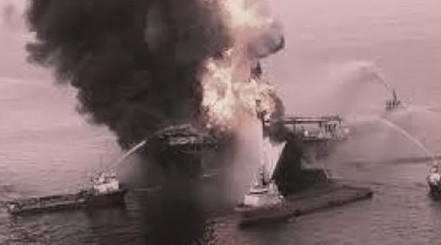The US Department of the Interior announce new offshore oil safety rules which are the result of extensive consultation and evaluation after the Deepwater Horizon tragedy. These well control regulations aim to reduce the risk of an offshore oil or gas blowout that could result in the loss of life, serious injuries or substantial harm to the environment.
The regulations represent one of the most significant safety and environmental protection reforms the Interior Department has undertaken since Deepwater Horizon, and builds upon a number of reforms instituted over the last six years to strengthen and modernize offshore energy standards and oversight.
“The well control rule is a vital part of our extensive reform agenda to strengthen, update and modernize our offshore energy program using lessons learned from Deepwater Horizon,” said Secretary of the Interior Sally Jewell.
“I applaud BSEE for their work to develop a rule that takes into consideration an intensive analysis of the causes of the tragedy, advances in industry standards, best practices, as well as an unprecedented level of stakeholder outreach.”
The regulations build upon findings and recommendations from several investigations and reports concerning the root causes of Deepwater Horizon and extensive consultation with industry groups, equipment manufacturers, federal agencies, academia and environmental organizations.
The final rule is a comprehensive regulation addressing all dimensions of well control, including more stringent design requirements and operational procedures for critical well control equipment used in oil and gas operations on the U.S. Outer Continental Shelf.
Specifically, the final rule addresses the full range of systems and equipment related to well control operations, with a focus on blowout preventer requirements, well design, well control casing, cementing, real-time monitoring and subsea containment. The measures are designed to improve equipment reliability, especially for blowout preventers and blowout prevention technologies. The rule requires operability of equipment through rigorous testing and provides for the continuous oversight of operations, all with the goal of improving the reliability of equipment and systems to protect workers’ lives and the environment from the potentially devastating effects of blowouts and offshore oil spills.
The regulations combine prescriptive and performance-based measures to ensure that oil and gas companies and offshore rig operators are cultivating a greater culture of safety that minimizes risk. Key features of the rule include requirements for blowout preventer systems, double shear rams, third party reviews of equipment, real-time monitoring data, safe drilling margins, centralizers, inspection intervals, and other reforms related to well design and control, casing, cementing and subsea containment.
“We listened extensively to industry and other stakeholders and heard their concerns loud and clear — about drilling margins, blowout preventer inspections, accumulator capacity, and real-time monitoring,” said Assistant Secretary for Land and Minerals Management Janice Schneider.
“This rule includes both prescriptive and performance-based standards that are based on this extensive engagement and analysis.”
Based on robust, technical comments received during the rulemaking process, several adjustments were made to provisions of the proposed rule that are reflected in the final version. These changes preserve stringent requirements regarding the safety drilling margin, interval testing and major inspections for blowout preventers, and also incorporate criteria for alternative practices that are subject to review, justification and approval. This rule provides flexibility so that regulatory oversight keeps pace with technological changes, provided future innovations can meet the rule’s standards for safety performance.
The new rule is in harmony with industry’s best practices, standards and equipment specifications. For example, new drilling rigs already are being built pursuant to updated industry standards that BSEE used as a foundation for the rule. Furthermore, most rigs comply with recognized engineering practices and original equipment manufacturers requirements related to repair and training. For companies that may need time to bring their operations into compliance, most of the requirements do not become effective until 3 months after publication of the final rule. Moreover, several requirements have more extended timeframes for compliance.
Please click below to read Well Control Final Rule Fact Sheet
Source: US Department of Interior































































